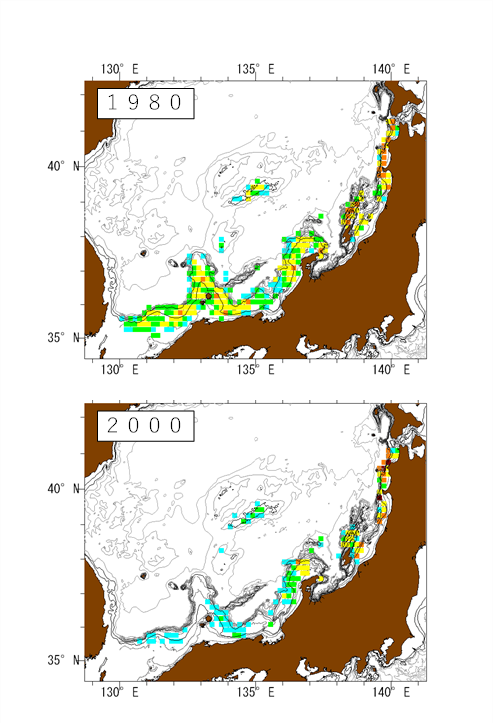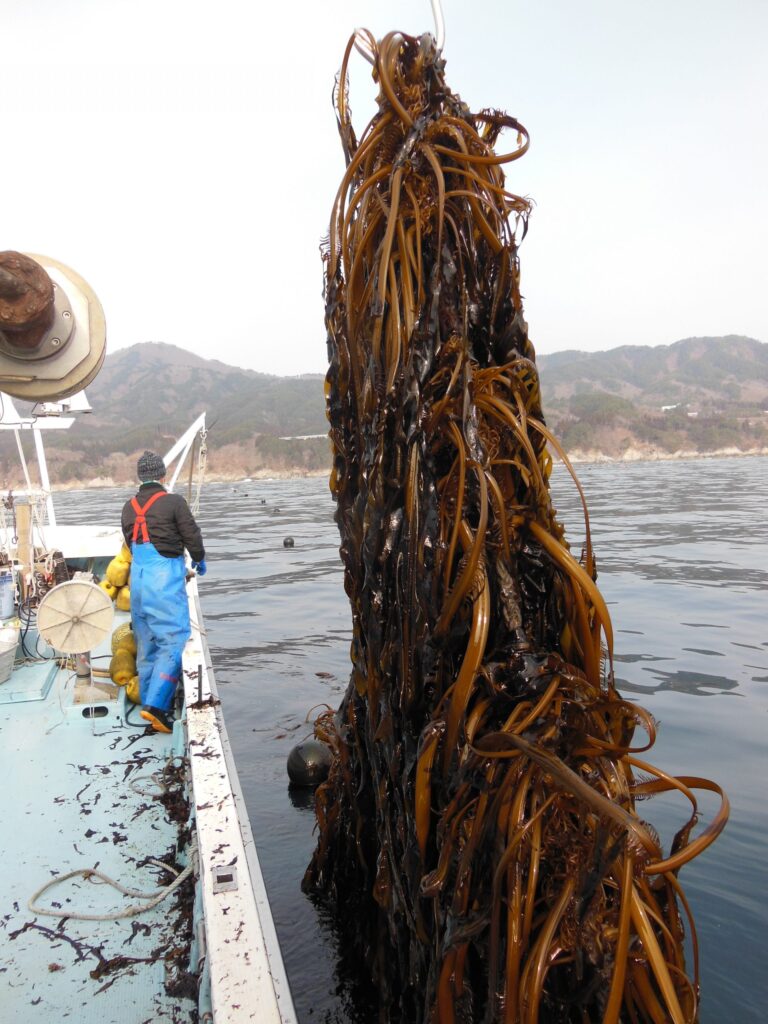Sub-theme leader
Hideaki KIDOKORO (Fisheries Resources Institute, Japan Fisheries Research and Education Agency)
Overview
Changes in the fishing season and fishing grounds of important fisheries species will be predicted using the common scenarios of climate change in the project, and the impact of climate change on Japanese fisheries in each region will be evaluated. In particular, for demersal fish species for which the impact of climate change around Japanese waters is little known, we will examine the changes in species distribution, fishing season, and fishing grounds using logbook data for major demersal fish species caught in the bottom trawl fisheries. Based on the knowledge obtained in the present study, we will improve forecasting models that contain environmental factors, and attempt to evaluate the impact of climate change on Japanese fisheries more precisely. In contrast, for the aquaculture industry, we will estimate the effects of geographical characteristics as local factors that are indispensable for understanding the impact of climate change on seagrass beds and fishing grounds in coastal regions. In addition, we will estimate the impact of changes in the nutrient supply process, which it is suggested to be affected by climate change, on the wakame (Undaria pinnatifida) seaweed farm. We will use the results to evaluate the effectiveness of adaptation options for the aquaculture industry in each region and provide information to support the formulation of adaptation measures considering economic perspectives at the local government level.


Shifts in fishing grounds of bottom trawl fisheries in the Sea of Japan (a) and wakame (Undaria pinnatifida) seaweed farm in the Sanriku Coast region (b).
Objectives
- Understand changes in the fishing season and fishing grounds of bottom trawl fisheries in Japanese waters.
- Forecast the changes in fishing seasons and fishing grounds for major fishery target species, and changes in fish species composition landed at major ports.
- Understand the impact of the nutrient supply process on the wakame seaweed farm in the Sanriku coast region.
- Evaluate the impact of climate change on seagrass beds and aquaculture in the Seto Inland Sea, while considering the effects of geographical characteristics.
- Display the spatiotemporal changes in the effectiveness of adaptation options by region.
Research targets and plans
- Show outlines of spatiotemporal changes in fish species distributions and the differences among regions, based on bottom trawl fisheries catch data around Japanese waters, and develop a prediction model for estimating the impact of climate change on Japanese bottom trawl fisheries.
- Make future forecasts for major fisheries target species using the temperature ranges of the fishing grounds and spatiotemporal water temperature data provided as the common scenarios of climate change in the project, and predict the impacts at major ports in each region.
- Estimate the impact of local influence factors, other than water temperature, on the seagrass bed ecosystem in the Seto Inland Sea using existing observation results and environmental information.
- Install observation sensors at the wakame seaweed farm in the Sanriku Coast region to observe the impact of changes in water temperature and nutrients on the wakame and use the data to construct a forecasting model that modifies the effects of nutrients on wakame seaweed farming.
Assumed adaptation measures
- Adoption of fisheries management measures considering changes in fishing seasons and fishing grounds for major fisheries target species caused by climate change
- Construction of efficient fishery industries according to predicted changes in the composition of fish species landed in each region.
- Plan efficient aquaculture operations by obtaining real-time environmental data using ICT technologies.
- Present adaptation options (e.g., breeding, relocating, and changes in farmed species) based on the evaluated effectiveness.
